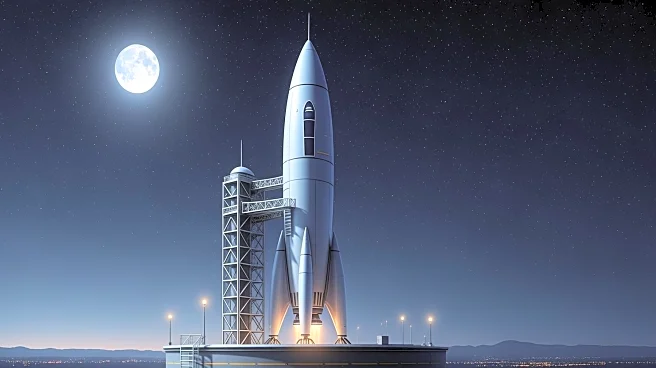What's Happening?
GE Aerospace has seen a significant increase in its stock value, closing at approximately $300.14 as of October 17, 2025, marking a 78% rise year-to-date. This surge is attributed to several factors, including
the anticipation of Q3 earnings results expected on October 21, 2025, where analysts predict an EPS of around $1.45 on $10.3 billion in sales. The company has also secured a $5 billion contract with the U.S. Air Force for F110 fighter engines and extended CEO Larry Culp's contract through 2027. Additionally, GE Aerospace has announced a partnership with AerCap to manage lease-pool services for its GE9X engine, further strengthening its market position.
Why It's Important?
The rise in GE Aerospace's stock reflects strong investor confidence in the company's strategic direction and operational improvements. The anticipated Q3 earnings report could further bolster this confidence if the company meets or exceeds expectations. The $5 billion Air Force contract and the partnership with AerCap are significant as they enhance GE's revenue streams and market presence in the aerospace sector. These developments are crucial for stakeholders, including investors and industry partners, as they indicate robust growth potential and stability in GE Aerospace's operations.
What's Next?
The upcoming Q3 earnings report on October 21, 2025, is a critical event for GE Aerospace, with analysts closely monitoring the company's performance and future guidance. Positive results could lead to further stock appreciation, while any negative surprises might impact investor sentiment. Additionally, GE Aerospace's ongoing efforts to resolve supply chain issues and ramp up engine production will be pivotal in maintaining its growth trajectory and meeting market demand.
Beyond the Headlines
GE Aerospace's strategic moves, including its environmental initiatives and advanced technology developments, such as the hybrid-electric engine generator project, highlight its commitment to innovation and sustainability. These efforts could have long-term implications for the aerospace industry, potentially setting new standards for environmental responsibility and technological advancement.











